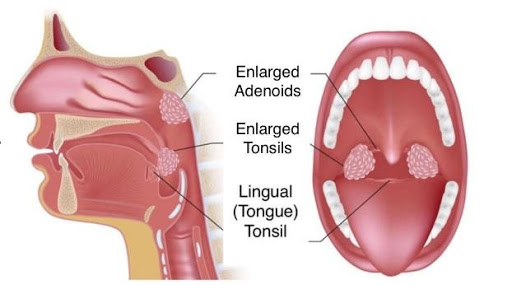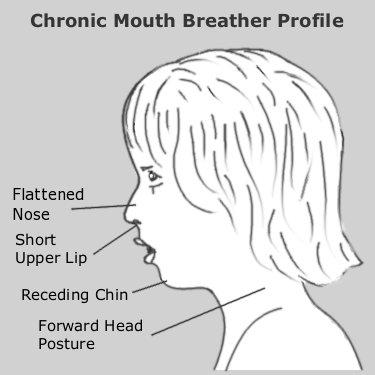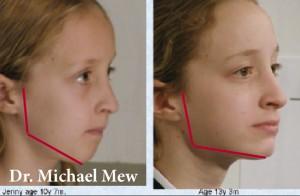Functional orthodontics
As parents we absolutely want what is best for our children in every way. Many parents are well aware of the specific milestones that our children should reach during the first eighteen months of life; however there are several important growth and development factors that must be evaluated for your child during the first decade of life. Surprisingly, it is your child’s dentist who becomes the guardian of normal facial growth and development. Through our work in this area, we know that dentistry is more than just taking care of your child’s teeth. The goal of every dentist should be to monitor and guide the facial growth and development of young children to achieve the following:
1.
A Pleasing Face which equals Optimal Aesthetics
2.
A Beautiful “Full Smile”
3.
Optimal Facial Growth
4.
An Ideal and Functional Bite
5.
No TMJ Problems
6.
Nasal Breathing
7.
Lips Sealed at Rest
8.
No Tongue Habits or Swallow problems
9.
A Lifetime of Total Body Health
Many parents are unaware that 60% of their child’s facial development is completed by Age 8 and that 90% of facial development is completed by Age 12. This means that the earlier your child sees a dentist, the better the opportunity to detect and correct any growth and development problems that may be present.
There are several influences which can cause an unequal growth of a child’s face and this imbalance may affect your child’s health & appearance. A normal balanced face is the result of more than just balanced bone growth. It is the balance of normally functioning muscles, proper nutrition & the ability to breathe normally. Scientific studies have shown that when these delicate balances are altered, changes in your child’s health & appearance will occur.
One of the most common abnormalities in a child’s facial growth & development is caused by a compromised airway or quite simply stated –“The inability to breathe properly through the nose”. Children who cannot breathe well through their nose will tend to breathe through their mouth. This sets up a chain of events which may severely impact not only the health of a child but also the way a child’s facial features develop & ultimately the way a child looks as an adult.
The most common causes of altered breathing are:
1.
Facial Asymmetry
2.
Enlarged Adenoids
3.
Enlarged Tonsils
4.
Deviated Septum (Nasal obstruction)
5.
Tongue Habits or Swallowing Problems
6.
Allergies
7.
Chronic Sinus Infections

As parents we often see the signs of airway problems however they often go unnoticed.
Here are a few common symptoms of airway problems:
1.
Mouth Breathing – Lips apart
2.
Chapped Lips and Soft Tissue Gingivitis
3.
Venous Pooling Beneath the Eyes – Dark circles beneath the eyes
4.
Change in Head Posture – Posturing the head forward and/or tipping the forehead backwards
5.
Tonsil and Adenoid Problems – Chronic sinus problems, throat problems
6.
Snoring – Children do not usually snore
7.
Loud grinding of teeth during sleep
8.
Bed wetting
9.
Reflux in the Eustachian Tube – Leads to inner ear infections

Enlarged adenoids and tonsils are by far the most common causes of airway compromise. Adenoids are tonsil-like glands located at the back of the nose. The most current literature indicates that tonsils and adenoids serve to bolster the immune system during the first two years of life. After that there seems to be no obvious function and a child can live normally without them.
Children are born with adenoids which are quite small. As a child grows, so do the adenoids, reaching their maximum size when the child is 10 to 12 years old. From that point on, normal adenoid tissue starts to shrink on its own. It's during the growth phase that adenoids can cause problems. Enlarged or "hypertrophied" adenoids, can block a child's nasal passages and result in nasal congestion, mouth breathing and increased snoring. In severe cases, where the adenoid block the nasal passage completely, they can cause sleep disturbances such as sleep apnea where breathing is stopped altogether. A child may be tired all the time as a result of interrupted sleep related to the nasal blockage which typically worsens at night.
Of course enlarged adenoids are not the only cause of persistent nasal congestion in children. Aside from the history of symptoms, the best way to assess all of the facial growth components is for the dentist to take a 3 Dimensional Cone Beam Computed Tomography (3D CBCT) of the head and neck region. This one radiographic image shows in 3 dimensions all of the hard and soft tissue structures on the head and neck. With the pictures produced from one radiographic image we can fully evaluate the influences and complexities which are most likely to affect facial growth, function and health, many of which cannot be seen by direct physical examination.
Here are some very important details that can only be seen in detail with a 3D CBCT:
1.
Whether the airway is obstructed or compromised and to what degree and why.
2.
If changes of growth or misalignment of the facial bones have occurred and to what degree and why.
3.
If congestion of the various sinuses and nasal passage is present and why.
4.
What stage of growth and development the child is undergoing and to what degree can the growth changes be corrected by early intervention.
5.
The presence of Temporomandibular Joint (TMJ) dysfunction.
6.
The tendency for Sleep Disordered Breathing or Sleep Apnea.
7.
Asymmetries causing Cranial Strain and facial asymmetry
8.
Enlarged adenoid tissue intruding into the nasopharyngeal airway and to what degree.
9.
Enlarged tonsils intruding into the oropharyngeal airway and to what degree.
10.
Unnatural head posture to assist with breathing and why.
11.
Inferior-anterior positioning of the hyoid bone indicating a forward tongue posture & swallowing problems.
12.
Deviated septum compromising the nasal airway.
13.
Infected ethmoid sinus.
14.
Maxillary sinus retention cyst.
15.
Unusual obliteration of the nasopharyngeal airway.
16.
Impacted teeth and their position.
17.
Alignment of teeth in the jaws.
18.
Bone density and structure.
19.
Cysts, tumors or other pathology.
20.
Facial Growth patterns including the upper and lower jaws
We know that chronic nasal blockage can contribute to increased rates of ear infections and persistence of fluid in the middle ear area. For the child with recurrent ear infections, removal of enlarged and obstructing adenoids or facilitating normal growth may help reduce the number of ear infections.
At Greenlane Dental, we can help to assess and eliminate the causative factors of facial growth abnormalities. When corrected early in a child’s life, the facial growth is encouraged to return to harmonious growth and development. In those cases where facial growth changes are significant and facial harmony is disrupted, your dentist may intervene and guide the child’s growth back to normal. Using various appliances your dentist can actually modify the abnormal growth pattern and restore the balance of growth that nature intended. Taking your child to the dentist as early as possible, yes even at age 3, is very important.

Here are four advantages of early examination and diagnosis and treatment:
1.
Removes harmful factors influencing growth
2.
Excellent ages for growth guidance and restoring normal growth
3.
Assists in improving the psychological well-being of the child
4.
Saves some patients from future jaw surgery

